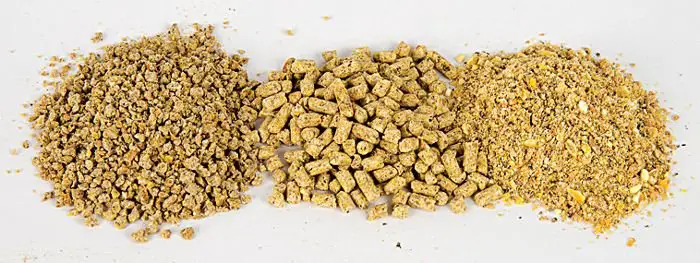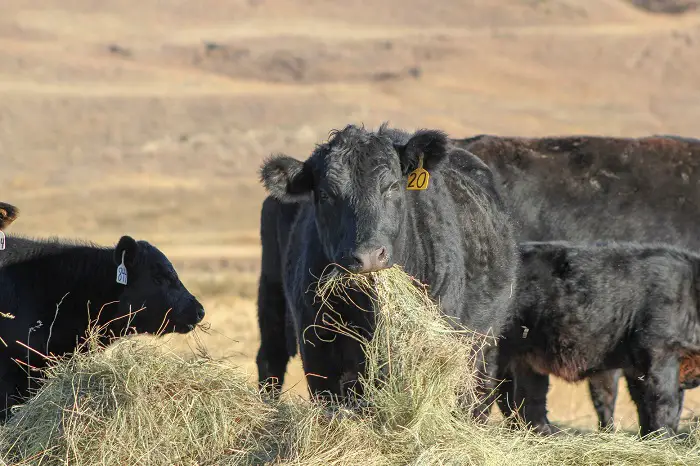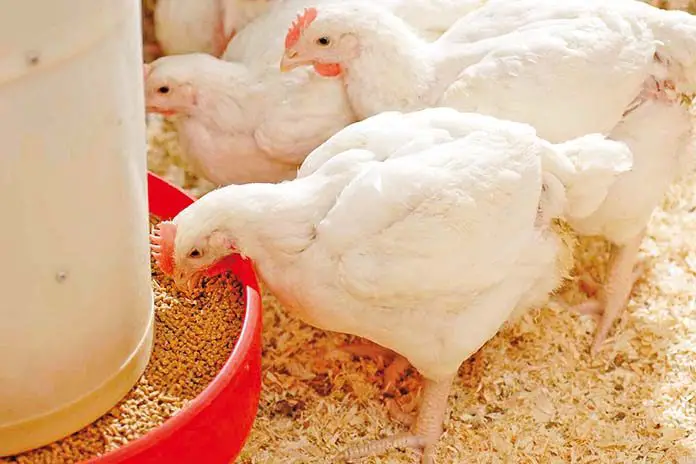The aim of lamb fattening is to maximize the carcass weight gain of weaned lambs in the shortest period possible to produce the most succulent lamb meat for the market. Most lambs are fattened in a period ranging from 70-90 days utilizing high-quality feed ingredients and/or formulated fattening diets. Lamb fattening is one of the most profitable among most ruminants due to the ability of sheep of converting roughage efficiently into meat. Fattening can be done intensively with the lambs fed in confinement or on a pasture system with lambs grazing on selected grasses and legumes. Both systems have advantages and disadvantages that will be discussed below.
Contents
Nutrition for Lamb Fattening
When embarking on lamb fattening the following considerations have to be taken into account in order for the venture to be profitable:
- Breed of lamb
- Age of lambs being fattened with the younger the better
- Disease and health status of lambs, lambs have to be vaccinated and dewormed before fattening.
- Nutrition
Nutrition plays a huge part in the lamb fattening process as it provides the necessary nutrients to support the rapid growth expected in the fattening period. The key nutrients required for fattening are fibre, water, energy, protein, vitamins, and minerals
Energy Sources for Lamb Fattening
Energy is a key nutrient in lamb fattening and as the name suggests is about putting on fat on the carcass. Most energy on the growing lamb goes to maintenance and growth any excess above these requirements is channeled to storage in fat cells. Grains and their by-products are the main sources of energy in lamb-fattening diets although fats and oils can be used to a limited extent. Grains that can be used are corn/maize, oats, rye, barley, wheat, and sorghum, these are coarsely ground and added to feed or supplement grazing. Care should be taken when feeding grain to lambs as they can develop numerous digestive and metabolic issues like acidosis and bloat which can be lethal
Fibre
Roughages make the bulk of the ingredients for fattening sheep as sheep are ruminants, and bulky high-fibre roughage is essential for normal rumen function. Common roughage sources are grass from pasture or veld, hay, straw, by-products, and crop residues. However, the inclusion of fibre or roughage is limited in fattening diets as they have a dilution effect on other key nutrients like energy and protein.
Grasses and hay
Where the market demands leaner lamb carcasses forage-based fattening using grass is the best option for fattening without grain. Sheep graze well on short and leafy grasses like ryegrasses, timothy, and fescues, their nutritive content, and palatability however diminish as the grasses grow. Hay can also be produced when these grasses are cut and dried when still young and fed with concentrates intensive systems.
Brassicas
Brassicas are a common and cheap form of forage for lamb fattening with the potential for good weight gains with minimal supplementation. Examples are stubble turnips and kale which can be grown together with pasture or as a mono-crop for feeding or grazing lambs even in winter.
Water
Water is by far the most important and often neglected nutrient in lamb fattening, required for all of the bodily functions to operate. Water intake and quality are correlated to feed intake and the lack of water reduces feed intake, leading to reductions in lamb carcass weight gains. Water accounts for more than 75% of muscle mass, which means that meat is basically mostly water, this also makes water very critical in fattening as dehydration leads to a rapid loss in weight.
Proteins for Lamb Fattening
In ruminant feeding, the protein quality is usually more important than the actual quality of the protein as the protein does not feed the animal directly but the rumen microbes. This allows the feeding of cheap sources of protein like urea and chicken litter, however, care should be taken not to feed these with raw soya beans. Anything with a crude protein level above 20% is classified as a protein source, the list of natural sources includes soya bean meal, whole soya beans, cotton seed meal, alfalfa, distiller’s/brewers grains and fishmeal.
Legumes
Grasses can be grown together with legumes like clover to improve the nutritive value of the veld as legumes provide protein leading to better gains. Important forages in this category are alfalfa, and clovers with alfalfa fed as hay to reduce the risk of bloating when fed in excess or fresh.
Vitamins and Minerals
Fattening lambs will require vitamins and minerals to support their rapid growth during the fattening period. Common minerals required by lambs are sodium, calcium, and phosphorus, and of these sources are common salt, limestone powder, and mono-calcium phosphate respectively. Vitamins are normally supplied in specially formulated and designed premix packs added to feed.
Additives for Lamb Fattening
Apart from all the above-named nutrients, additives can be added to the feed to improve the health, and carcass weight gains of the lambs during fattening. Some common additives are approved antibiotics, ionophores, and, ammonium chloride which prevents kidney stones.
Concentrates or Grain
Concentrates are feedstuffs with high nutrient levels for example energy or protein and are fed to high-performing animals when forage diets can supply all required nutrients. Grains are the most concentrated energy sources hence are added to fattening diets to improve weight gains and market acceptability of the lamb meat. Grains are one of the best feeds for lamb fattening.
Pasture vs Concentrate Lamb Fattening
The question of whether to concentrate or pasture-fatten lambs is mostly an economic and market perception decision. Concentrates tend to be more expensive than pastures so the choice has to be made on whether the expected gains will be able to pay for the price of the concentrates. Pasture-fattened lambs have lower fat content in meat than concentrate-fed lambs of the same slaughter weights, hence best where lean carcasses are required.
Commercial Sheep Diets
Commercial sheep diets are the best for lamb fattening. Specially designed and formulated and manufactured lamb fattening diets are available which will have a wide choice of additives if the farmer so chooses. These are good options where the farmer has no cheap on-farm feed resources, lacks the ability to produce a cheap and effective diet on the farm and/or as supplements to forage.
In conclusion, the best feed for lamb fattening is the feed that can give the best carcass weight gains at the lowest price possible without affecting the health and wellbeing of the lambs thus guaranteeing the best quality lamb meat required by the market.




